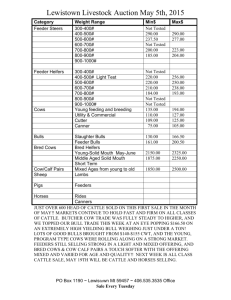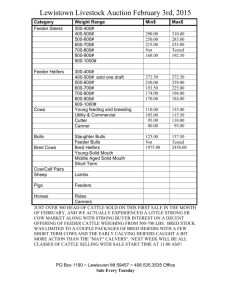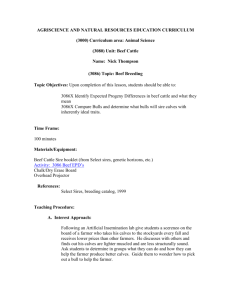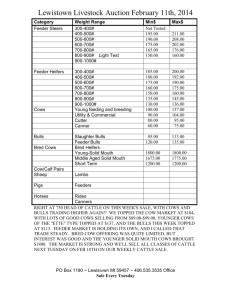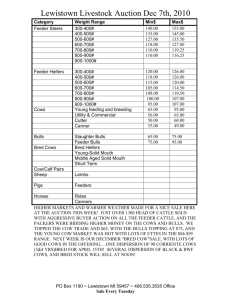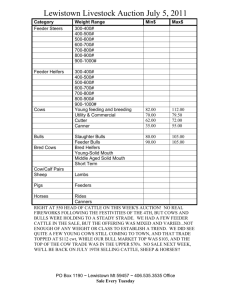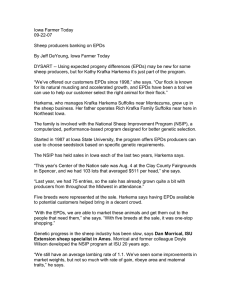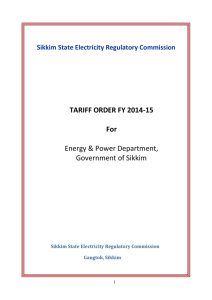Selection Indexes Fact Sheet - LivestockTopics Washington State
advertisement
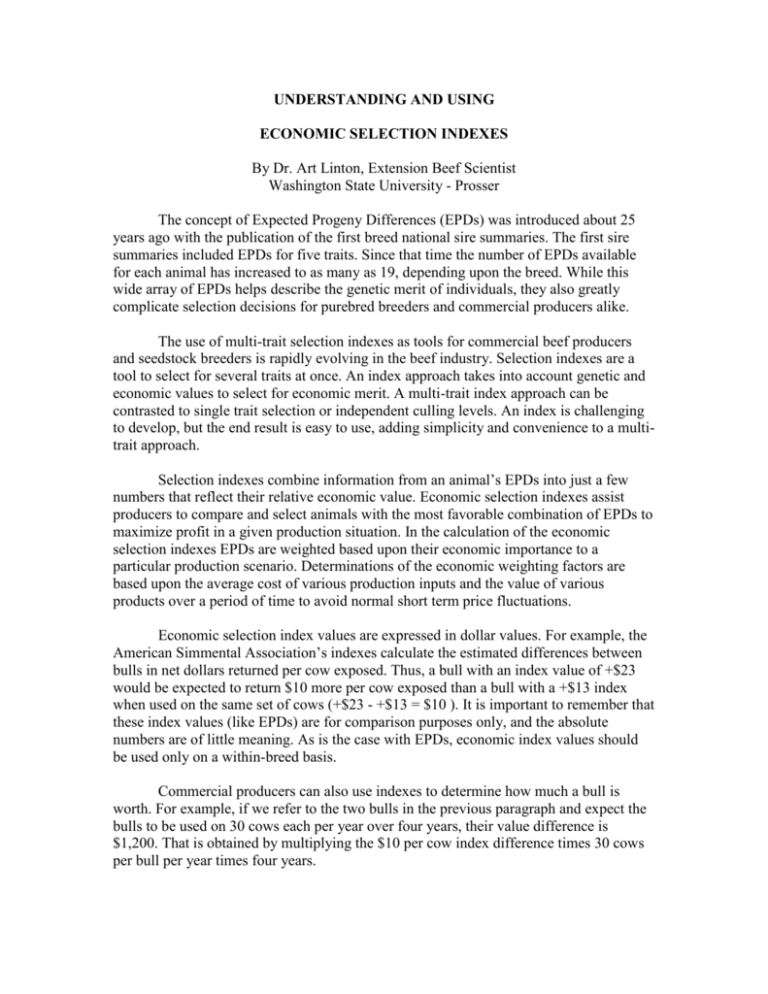
UNDERSTANDING AND USING ECONOMIC SELECTION INDEXES By Dr. Art Linton, Extension Beef Scientist Washington State University - Prosser The concept of Expected Progeny Differences (EPDs) was introduced about 25 years ago with the publication of the first breed national sire summaries. The first sire summaries included EPDs for five traits. Since that time the number of EPDs available for each animal has increased to as many as 19, depending upon the breed. While this wide array of EPDs helps describe the genetic merit of individuals, they also greatly complicate selection decisions for purebred breeders and commercial producers alike. The use of multi-trait selection indexes as tools for commercial beef producers and seedstock breeders is rapidly evolving in the beef industry. Selection indexes are a tool to select for several traits at once. An index approach takes into account genetic and economic values to select for economic merit. A multi-trait index approach can be contrasted to single trait selection or independent culling levels. An index is challenging to develop, but the end result is easy to use, adding simplicity and convenience to a multitrait approach. Selection indexes combine information from an animal’s EPDs into just a few numbers that reflect their relative economic value. Economic selection indexes assist producers to compare and select animals with the most favorable combination of EPDs to maximize profit in a given production situation. In the calculation of the economic selection indexes EPDs are weighted based upon their economic importance to a particular production scenario. Determinations of the economic weighting factors are based upon the average cost of various production inputs and the value of various products over a period of time to avoid normal short term price fluctuations. Economic selection index values are expressed in dollar values. For example, the American Simmental Association’s indexes calculate the estimated differences between bulls in net dollars returned per cow exposed. Thus, a bull with an index value of +$23 would be expected to return $10 more per cow exposed than a bull with a +$13 index when used on the same set of cows (+$23 - +$13 = $10 ). It is important to remember that these index values (like EPDs) are for comparison purposes only, and the absolute numbers are of little meaning. As is the case with EPDs, economic index values should be used only on a within-breed basis. Commercial producers can also use indexes to determine how much a bull is worth. For example, if we refer to the two bulls in the previous paragraph and expect the bulls to be used on 30 cows each per year over four years, their value difference is $1,200. That is obtained by multiplying the $10 per cow index difference times 30 cows per bull per year times four years. A brief explanation of the indexes available for the various breeds follows. See the respective breed web site or published sire summary for more information. Angus Weaned Calf $Value ($W) quantifies value differences of sires when used in the production and sale of weaned calves with the normal retention of replacement heifers. Feedlot Value ($F) accounts for feedlot performance with a formula that includes industry values for days on feed, ration costs, and cash cattle prices. Carcass Grid Value ($G) combines quality grade and yield grade attributes calculated on a three year rolling average of industry grids. Total Beef Value ($B) reflects the value differences in the feedlot and on the rail. It incorporates $F and $B, but is not a sum of the two Cow Energy Value ($EN) assesses differences in dollar savings related to cow maintenance and lactation costs. A larger value is more favorable. Herefords Baldy Maker Index ($BMI) is an index to maximize profit using Hereford bulls in a rotational crossbreeding program with retention of ownership through the feedlot and fed cattle marketed on the Certified Hereford Beef pricing grid. Calving Ease Index ($CEZ) is similar to BMI$ except that bulls are mated only to yearling heifers. This index increases emphasis on direct and maternal calving ease. Certified Hereford Beef Index ($CHB) is a terminal sire index with all offspring sold out of a feedlot on a CHB pricing grid. Simmental All Purpose Index (API) evaluates sires being used on the entire cowherd (both Angus first-calf heifers and mature cows) with a proportion of the heifer calves retained for breeding and the steers and remaining heifers fed out and sold on a grid. Terminal Index (TI) is designed for evaluating sires in situations where they are bred to mature Angus cows, all offspring are fed out and sold on a grid. Heifer-Sire Index (HI) is appropriate for sires to be used on first-calf heifers where a portion of the daughters are retained as replacements and the balance of their get are fed for slaughter. Charolais Terminal Sire Profitability Index assumes all offspring are marketed based upon carcass value and replacement females are purchased or raised as a separate enterprise. Other Breeds It is likely that other breeds will soon be developing their own economic selection indexes. 04/07/2005
